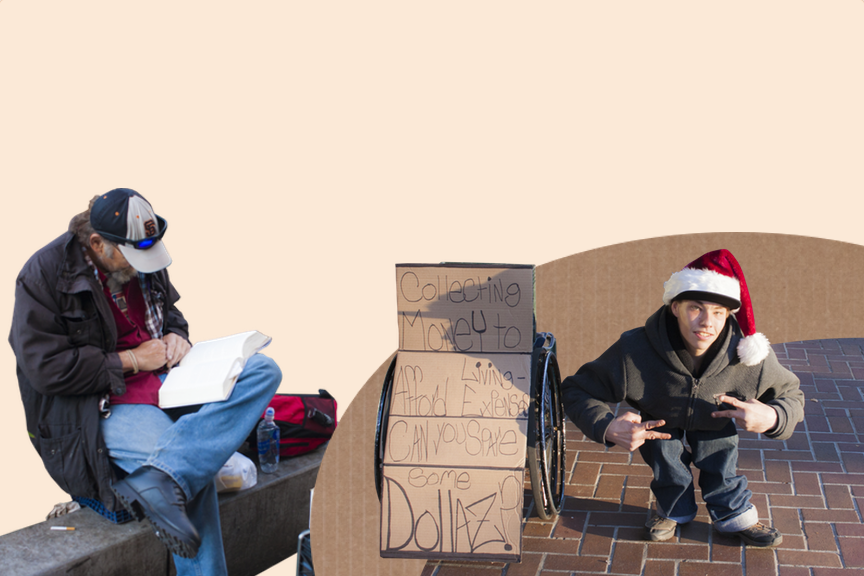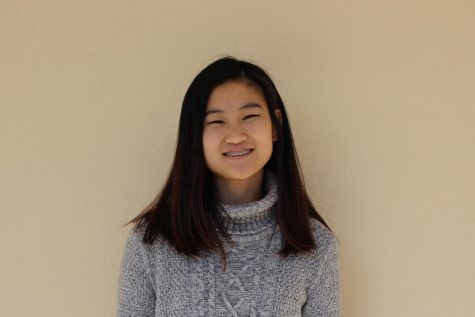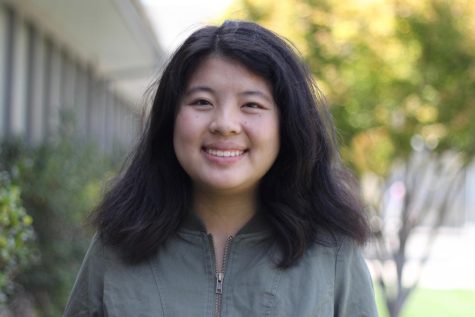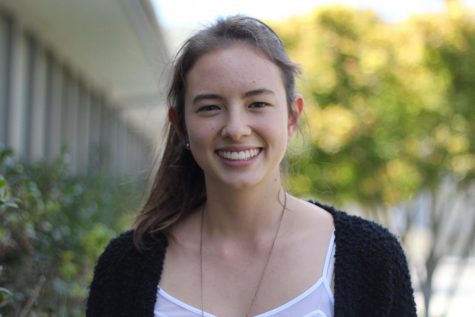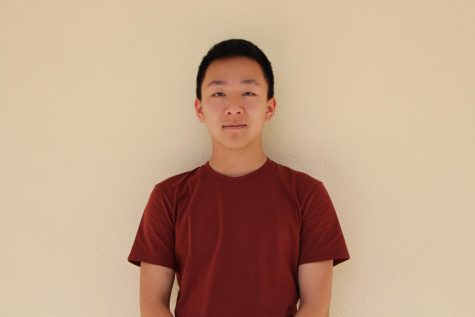On the Sidewalks of Success: Deprivation in the Silicon Valley Part Two
December 15, 2016
Intro
The Bay Area is a land of plenty, yet the insidious threat of homelessness still lurks. To many, the holiday season poses a stark reminder of the families and homes they have lost.
Rent hikes and increasing rates of homelessness might suggest a negative prospect, but there are still reasons to be optimistic. The Silicon Valley has a number of solutions to combat homelessness such as Destination: Home, affordable housing projects and Silicon Valley at Home, among others. The county recently passed Measure A, which supports affordable housing and funding for the homeless and other vulnerable populations. In addition, our school has resources to provide for those in need, with on-campus organizations like Club 10.
Although these efforts are steps in the right direction, we must continue to offer our unwavering support to the homeless. Through these pages, The Talon aims to illustrate that homelessness is a very real problem in our community, and the first step in remedying homelessness is to understand that these are people who need our help and deserve our attention.
Silicon Valley’s Solutions
When looking at the Silicon Valley, the rest of the world sees only billionaire entrepreneurs, overlooking the countless families on the other side of the socioeconomic spectrum who live in shelters, cars or on the streets. As victims of the Valley’s prosperity, these families struggle to keep up with rising property values. Two different organizations have taken different paths to mitigate this issue.
Silicon Valley at Home (SV@Home) works to get low-income and homeless individuals into affordable housing units with basic amenities so that they may live sustainably on their own. Through their work, the people at SV@Home have been able to house over 1000 homeless individuals over the last few years, and they are taking actions to open up homes for many more.
Funding from individual donors and companies like Google and U.S. Bank goes to the construction or acquisition of existing properties for housing. Conversion of old motels into homeless housing, leasing land to build multi-story buildings or simply adding affordable units to regular complexes are a few ways that SV@Home is trying to end the issue of homelessness.
On the other hand, Destination: Home looks to solve the issue through legislative means, pushing local government for policies to aid the homeless.
Recently, spending on affordable housing projects increased due to “Home Not Found,” a comprehensive cost study on homelessness by Destination: Home and Santa Clara County.
“[The study] showed that, overall, housing homeless individuals is less costly than providing emergency services for them living on the streets,” Destination: Home Communications and Engagement Specialist Colleen Haley said. “The more vulnerable individuals are [and] the longer they’ve been on the street, the more emergency services they require.”
In response to the study, counties in East San Jose have invested millions more into housing programs. The efforts of advocacy organizations such as Destination: Home in conjunction with housing aid organizations such as SV@Home have brought homelessness to the forefront of discussion in the Valley and will continue to better the issue in the years to come.
School Solutions
With only a cursory inspection of our school, it’s not immediately apparent that homelessness is a predicament that students on campus might face. However, Los Altos does have an established solution, fueled by student initiative and help from administration, to help combat the issue: Club 10 is an organization on campus that provides resources for homeless families and other families in need. Its goal is not only to provide immediate assistance, but also to proffer guidance in legal, financial and medical areas related to homelessness.
Club 10 was created last year by a group of parents, administrators and students who had observed how homelessness was affecting some of their peers.
“[People usually] either come to me or go to… [the bilingual community liaison] who has a lot of connections with the community here at Los Altos,” counselor and Club 10 founder Ariel Rojas said. “We’ve had cases where people are homeless. We’ve had a few cases with families living in cars, families that are in need of paying rent, families who are in need of food. It’s not a ‘huge’ issue because a lot of families at this school do well here, but we do have families that are in need.”
Last school year, Club 10 held fundraising auctions to aid families by offering financial assistance in paying rent as well as other areas. Members hope to continue the practice this year, while also introducing new methods to help students grappling with homelessness and other dilemmas, such as more fundraisers and auctions.
Students can contribute to Club 10’s efforts in a variety of ways, primarily involving membership in the club and donations to the auctions that Club 10 is planning for this year.
“We would like a bigger membership in the club,” Rojas said. “But a big thing is for students to be aware: if you know somebody who’s in need and they’re not saying anything, come talk to us… We’re not going to publish names [or] talk about a particular family or anything like that… If you’re going through any hardship, you can always come to us and talk to us. We will always [maintain] confidentiality.”
Los Altos runs the gamut of charity clubs, ranging from local to international. Yet at the heart of the Los Altos community, the key issue of homelessness is all but overlooked. Club 10 is a strong first step, and with more initiative and increased dialogue between students and administration, the issue of homelessness at Los Altos can continue to improve.
On opposite ends of University Avenue
Talon writers Cameron Avery and Danny Vesurai spoke with several homeless people on University Avenue in Palo Alto in an attempt to understand their lives and philosophies.
In order to interview homeless people, we go to University Avenue because we recall that we’ve seen some homeless people here before — more than on Castro.
Within a few blocks we come across a man stationed outside Walgreens with a sign on his wheelchair. We pass him by at first, both stymied by our irrational fears and the stigma around homelessness. We walk a little farther, then pause in front of the Apple store. We look at each other, both guilty and fully aware we’ve just shirked our responsibilities.
We turn around, and say hello.
Zachary is a 23-year-old man who’s been disabled since birth with a deformed back and legs. He was forced to turn to asking for money on the street in 2011 after the death of his mother, his sole caretaker.
Since then, he’s perfected the art of panhandling along with his mindset, ignoring derogatory remarks about him from mean-spirited attackers while brightening the days of passersby. He seems to know everyone in this city; he often exchanges a wave and friendly greeting with people walking past.
“I’m a simple, organized money collector, somebody who’s just simply moving about his day and wants to make things happen,” Zachary says.
In the middle of the interview, a little girl comes up and hands him $5. He responds with a genuine, heartwarming smile.
“Thank you very much,” he says. “Have a nice day.”
When we ask him whether he’s ever been mistreated because of his situation, his initial response seems cynical.
“Yeah,” he says. “Pretty much all the time, considering that it’s improper to be 23-years-old and healthy enough to get a job… and be asking people for money on the street.”
Despite the derision he experiences, Zachary says the remarks don’t bother him.
“I don’t really care what anybody thinks,” he says. “They can call me a ‘piece of shit bum’ and I’m gonna be like ‘Alright, cool, you don’t even know me like that anyways,’ so it doesn’t bother me. Every once in awhile, people need somebody to scream at [and] I can understand being that somebody.”
The conversation lulls to a halt, and we thank him before bidding him goodbye.
Farther down University, we meet Buck. He’s reading intently, and when we try to get his attention, he doesn’t look up — we later find out he’s hard of hearing.
In a routine physical six months ago, Buck found that he needed a kidney transplant. As a result, he had to quit his job as a carpenter, which he’d held for over 40 years. He now spends his days on University Avenue collecting donations, though he’s decidedly less passionate about doing so than Zachary — Buck doesn’t actively greet people, instead choosing to sit quietly with a box and sign next to him while he reads a book.
“I’m not really your common homeless guy who sits around and drinks all day,” Buck said. “That’s not me.”
Buck views his situation with disbelief and attributes it to mere misfortune.
“I never thought I’d be stuck out here… in a million years,” Buck said. “It’s all just bad luck. I was doing fine, working steadily [with] a house in Portola Valley.”
Stigmas surround the homeless community, stigmas which even some homeless people themselves can’t seem to escape. Even Buck thinks of the “common homeless person” as a lazy drunkard.
But after our day spent talking to four of the same people that Buck had vilified, it was clear that his views were rooted only in mainstream folklore, urban myth that painted the homeless in a negative light.
For example, there was the woman who had cancer and had just undergone another round of chemotherapy treatments and didn’t have the energy to talk to us, but looked genuinely sorry that she couldn’t and told us to have a nice day and God bless us. Or Zach, who’s been deemed by society as inferior based on his disability, yet still manages to remain positive in the face of legitimate hardship. Or any number of the thousands of homeless in the Silicon Valley who didn’t choose to be homeless, who suffered factors beyond their control and were forced into their situation.
Buck was right about one thing: bad luck definitely plays a part in homeless people’s situations. Sometimes, people aren’t a product of their decisions. And in this supposed meritocracy, this valley of opportunity and success and wealth, this is overlooked far too often.
C++ and cardboard signs
News editor Alex Wong and staff writer Javin Pombra recently interviewed Jeff or Robert Pineda — he refers to himself as both. While Pineda’s words are occasionally nonsensical, he offers a unique, optimistic perspective on the issue of homelessness.
Like many of Silicon Valley’s residents, Jeff or Robert Pineda holds a career which centers around technology. Pineda has been trying to learn C++ and Java since he moved to the city in 2007, learning what he calls “pretty big heavyweights” of programming in attempt to create the next Microsoft or just to become a software engineer. Yet unlike most programmers in the Valley, Pineda has been homeless for almost a decade.
“Being homeless doesn’t mean you gotta be distraught or depressed because it ain’t easy,” Pineda said. “But for me, I [kept] homelessness a positive experience. It is a positive experience; you gotta believe it. Waking up every day without a meal, you gotta chase the meal.”
Keeping his files on portable drives, he spends each day organizing what he calls his “business data,” studying computer science and reading at the Mountain View public library. To learn C++ and Java, Pineda took programs at different community colleges and also plans to take online courses to further his education.
“I read a book everyday,” Pineda said. “I go the library, do some computers, spend time organizing all my business data… and keep aware of my software. I put in about three to six hours of studying on a computer and do other things too, personal stuff.”
Yet Pineda didn’t always want to get into tech. Throughout the 1990s, a few years after high school and after spending time in a mixed-trades school, Pineda worked in construction in Pleasanton. He spent over a decade in the trade and reflects on the time period positively.
“It was an awesome experience,” Pineda said. “If you can do [construction], you can do anything. You hook up the house and start putting things together, one after another, that’s what I did, one thing after another. If you can turn the wrenches, you can do it all. You do a lot of stuff in construction, [which] gives you enough information pretty much about yourself.”
“I went to Hawaii, spent some time there, went to Southern California, spent some time there…[got] relaxed,” Pineda said. “It was a mood change, [and] when I traveled I left it all behind. That’s the soldier you got to be. You got to walk away from it, and I made that choice. If you do that, you’ll find who you are.”
Pineda first began to look toward tech during that seven-year-long vacation when he read a series of books on technology.
“I just planted a seed,” Pineda said. “I said, ‘I’m going to read these books, I’ll figure it out, and see how far it is.’ It took me a little while when I was thinking about it. Read another book, read another book, to get into it. I think it slowly just developed a picture by itself.”
Long preceding his introspective journey, Pineda’s adventurous spirit developed during his childhood: one of his fondest memories is jumping off roofs when he was young.
“You ever jumped off a roof?” Pineda said. “Well we did. We were 3 or 4 years old. We climbed to top of the roof, to the second roof of the apartment, and bounced down onto a mattress. We were just perfect, ya know?”
Today, Pineda continues to view his situation in positive light. While he agrees being homeless is no gift, he still makes the most of it.
“Anybody who thinks they want to be a homeless in life is wrong,” Pineda said. But you just try to make the best of your life and if it works out, it works out.”
Q&A with Steve Hohs
Steve is a former software engineer who was laid off five years ago and has been homeless ever since.
What does a day in your life look like?
“The brutal truth is I get up, do all the stuff I need to do — clean up and get clothes, take showers, get breakfast — which takes me about three to four hours. If I have to get any paperwork done with the government, that takes another four to five hours. Your whole day is running around, doing what you have to do to survive. You have no car. Imagine walking or taking the bus to every place you go. What takes you 10 minutes could take me a whole day.”
Where do you see yourself in the future?
“I don’t really worry too much about the future because once you’re over 55 or 60, you’re already telling yourself that your time is up. I might have five years, I might have 10 years. I don’t think I have much more than that so right now, I’m going to try to enjoy the ride the best I can.”
Any advice for high schoolers?
“I want everybody your age to know that they should be careful of what they do because you can end up in a place like this faster than you think.”

